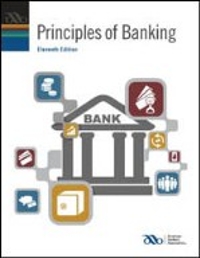

10. Capital Budgeting Problem Vatsa Packaging is considering expanding its production capacity by purchasing a new machine, the MCC-750. The cost of the MCC-750 is $2.75 million. Unfortunately, installing this machine will take several months and will partially disrupt production. The firm has just completed a $50,000 feasibility study to analyze the decision to buy the MCC- 750, resulting in the following estimates: Marketing: Once the MCC-750 is operating next year, the extra capacity is expected to generate $10 million per year in additional sales, which will continue for the 10-year life of the machine. Operations: The disruption caused by the installation will decrease sales by $5 million this year. Once the machine is operating next year, the cost of goods for the products produced by the MCC-750 is expected to be 70% of their sale price. The increased production will require additional inventory on hand of $1 million to be added in year O and depleted in year 10. Human Resources: The expansion will require additional sales and administrative personnel at a cost of $2 million per year. Accounting: The MCC-750 will be depreciated via the straight-line method over the 10-year life of the machine. The firm expects receivables from the new sales to be 15% of revenues and payables to be 10% of the cost of goods sold. Assume that cash requirements are 1.5 times the Accounts Receivable Vatsas marginal corporate tax rate is 21%. a. Determine the incremental earnings from the purchase of the MCC-750. b. Determine the free cash flow from the purchase of the MCC-750. c. If the appropriate cost of capital for the expansion is 10%, compute the NPV of the purchase. Extra Credit (2 Points) Extra credit shall be awarded only if all the three solutions to the subparts are logical, correct and supported by proper background work Using information from Question 10, answer the following additional questions to earn 2 points as extra credit a. While the expected new sales will be $10 million per year from the expansion, estimates range from $8 million to $12 million. What is the NPV in the worst case? In the best case? c. b. What is the break-even level of new sales from the expansion? What is the break-even level for the cost of goods sold? Vatsa could instead purchase the MCC-900, which offers even greater capacity. The cost of the MCC-900 is $4 million. The extra capacity would not be useful in the first two years of operation but would allow for additional sales in years 310. What level of additional sales (above the $10 million expected for the MCC-750) per year in those years would justify purchasing the larger machine? 10. Capital Budgeting Problem Vatsa Packaging is considering expanding its production capacity by purchasing a new machine, the MCC-750. The cost of the MCC-750 is $2.75 million. Unfortunately, installing this machine will take several months and will partially disrupt production. The firm has just completed a $50,000 feasibility study to analyze the decision to buy the MCC- 750, resulting in the following estimates: Marketing: Once the MCC-750 is operating next year, the extra capacity is expected to generate $10 million per year in additional sales, which will continue for the 10-year life of the machine. Operations: The disruption caused by the installation will decrease sales by $5 million this year. Once the machine is operating next year, the cost of goods for the products produced by the MCC-750 is expected to be 70% of their sale price. The increased production will require additional inventory on hand of $1 million to be added in year O and depleted in year 10. Human Resources: The expansion will require additional sales and administrative personnel at a cost of $2 million per year. Accounting: The MCC-750 will be depreciated via the straight-line method over the 10-year life of the machine. The firm expects receivables from the new sales to be 15% of revenues and payables to be 10% of the cost of goods sold. Assume that cash requirements are 1.5 times the Accounts Receivable Vatsas marginal corporate tax rate is 21%. a. Determine the incremental earnings from the purchase of the MCC-750. b. Determine the free cash flow from the purchase of the MCC-750. c. If the appropriate cost of capital for the expansion is 10%, compute the NPV of the purchase. Extra Credit (2 Points) Extra credit shall be awarded only if all the three solutions to the subparts are logical, correct and supported by proper background work Using information from Question 10, answer the following additional questions to earn 2 points as extra credit a. While the expected new sales will be $10 million per year from the expansion, estimates range from $8 million to $12 million. What is the NPV in the worst case? In the best case? c. b. What is the break-even level of new sales from the expansion? What is the break-even level for the cost of goods sold? Vatsa could instead purchase the MCC-900, which offers even greater capacity. The cost of the MCC-900 is $4 million. The extra capacity would not be useful in the first two years of operation but would allow for additional sales in years 310. What level of additional sales (above the $10 million expected for the MCC-750) per year in those years would justify purchasing the larger machine








